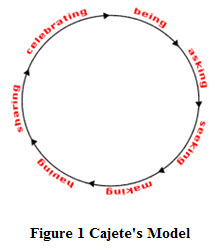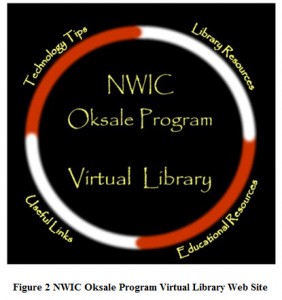An Indigenous Approach to Creating a Virtual Library of Education Resources
This article describes how students in the “Library Instruction and Information Literacy” class in the Graduate School of Library and Information Science at the University of Texas at Austin incorporated a service-based learning model drawing on indigenous learning styles to create a virtual library for students and educators at a tribal college. The project deliverables were planned for the Northwest Indian College (NWIC) Teacher Training Program, Oksale and were based on the theories of Native American educator Dr. Gregory Cajete.
Cajete’s theory describes the prescription for a fulfilled life through the cycle of “being, asking, seeking, making, having, sharing, and celebrating”. This cycle was seen as a means to understand (in Cajete’s words):
- One’s true face (character, potential, identity)
- One’s true heart (soul, creative self, true passion)
- One’s foundation (true work, vocation)
The design of the site (see Figure 2) used traditional Lummi colors (black, red, white, and yellow) and images (raven, frog, eagle, and salmon) to increase users’ familiarity and comfort with the site.
Cajete asks educators to “engender a commitment to service rather than competition, promote respect for individual, cultural, and biological diversity, and engage students in learning processes that facilitate the development of their human potential through creative transformation”.



0 comments
Kick things off by filling out the form below.
You must log in to post a comment.